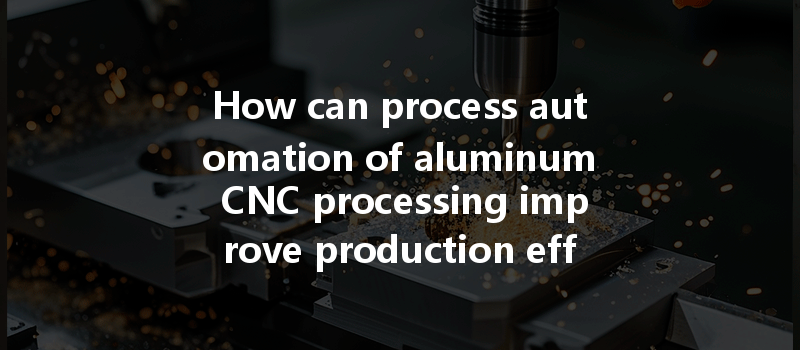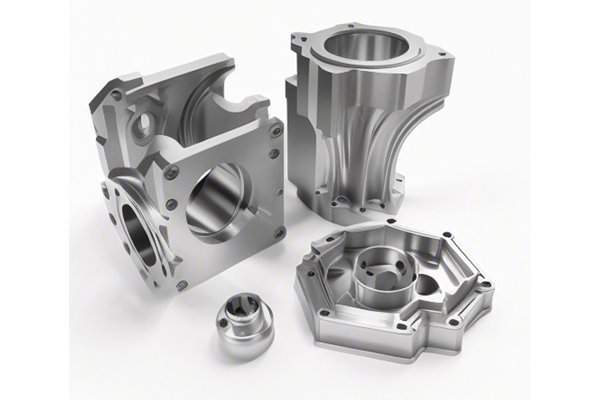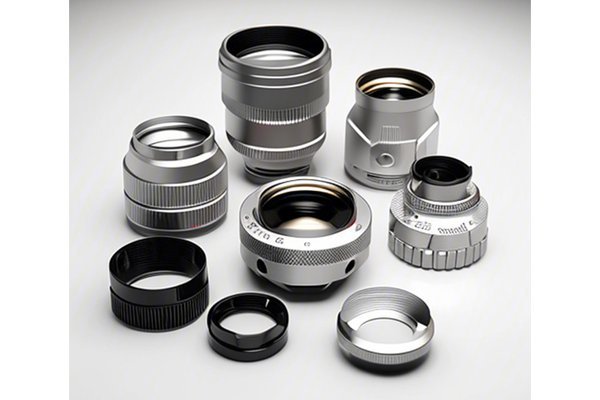Did you know that according to a report by the International Federation of Robotics, the adoption of industrial robots in manufacturing has grown by more than 75% over the past decade? This rapid increase emphasizes the shift towards automation in a sector traditionally known for its hands-on craftsmanship. Process automation is revolutionizing manufacturing, particularly in sectors like aluminum CNC processing, where efficiency and precision are paramount.
As industries strive to meet rising consumer demands while decreasing production costs and improving quality, automating processes within CNC machining has emerged as a solution worth investigating. This blog will delve deeply into how process automation can significantly boost productivity in aluminum CNC processing, the challenges faced, and the innovative solutions transforming the manufacturing landscape.
Understanding Process Automation in CNC Machining
Process automation refers to the use of technology to automate repetitive tasks or complex processes without significant human intervention. When applied to CNC (Computer Numerical Control) machining, automation can streamline operations, enhance accuracy, and enable manufacturers to produce high-quality aluminum parts with speed and efficiency.
The Role of CNC Machining in Aluminum Processing
Aluminum CNC machining is widely used due to aluminum’s lightweight, corrosion resistance, and versatility in various applications. From aerospace components to automotive parts, precise machining of aluminum is essential. However, the challenges of traditional machining processes—such as labor-intensive tasks, longer lead times, and the potential for human error—can hinder efficiency.
Automation in CNC Machining: Key Technologies
Benefits of Process Automation in Aluminum CNC Processing
The integration of automation into aluminum CNC machining provides numerous benefits that directly enhance production efficiency.
Automated systems can operate continuously without the need for breaks, leading to significant time savings. This allows manufacturers to increase their output while maintaining consistent product quality.
Automation reduces the chances of human error, resulting in higher accuracy in machining processes. This consistency leads to better quality products and minimizes waste.
With automation in place, manufacturers can reduce the reliance on a large workforce, leading to lower labor costs. Employees can then focus on more strategic roles that enhance the business.
Automated CNC machining systems can be easily reconfigured to accommodate different production runs, making it easier to adapt to changing market demands.
By employing IoT technology, manufacturers can gain access to real-time data regarding machine performance, leading to better decision-making and quick identification of any anomalies.
Implementing Automation: Step-by-Step Guide
While the advantages of automating CNC machining processes are clear, implementing such changes can be daunting. Here’s a step-by-step guide to help manufacturers transition smoothly to process automation:
Step 1: Assessment of Current Processes
Start by conducting a thorough analysis of current machining operations. Identify bottlenecks, repetitive tasks, and areas where human error frequently occurs. This assessment will provide a roadmap for targeted automations.
Step 2: Define Specific Goals
Outline what you aim to achieve with automation. Whether it’s increasing production output, improving quality, or reducing costs, having clear objectives will guide your automation strategy.

Step 3: Research Suitable Technologies
Explore different automation technologies that would best serve your objectives. This may include robotic arms, AI software, or IoT integration. Ensure the technology aligns with your manufacturing capabilities.
Step 4: Pilot Testing
Before fully integrating automated systems, consider conducting pilot tests. This allows you to assess the effectiveness of specific technologies in a controlled environment.
Step 5: Employee Training
Invest in training your employees to work alongside new automated systems. Employees who are knowledgeable about the technology can better assist in troubleshooting and optimal usage.
Step 6: Monitor and Optimize
After full implementation, continuously monitor automated processes. Use data analytics to identify areas of improvement, adjust workflows, and fine-tune operations as needed.
Challenges of Automation in CNC Machining
While the benefits of automation are significant, manufacturers may face challenges when implementing automated systems in aluminum CNC processing. Here are some common obstacles and potential solutions:
Automating CNC processes can require substantial upfront investment in new technology and training. Manufacturers can mitigate costs by opting for gradual implementation rather than an all-at-once overhaul.
Employees may be wary of job security in the face of automation. Open communication about the role of automation in improving efficiency and job complexity can alleviate these concerns.
A lack of technical skills among current employees can hinder successful automation. Investing in workforce training and outsourcing expertise can bridge this gap.
Seamless integration of new automated solutions with existing manufacturing systems can pose challenges. Collaborating with technology providers for optimal implementation and testing ensures a smoother transition.
Case Studies: Successful Automation Deployment
To further illustrate the impact of automation on aluminum CNC processing, let’s examine a few case studies where manufacturers successfully integrated automated solutions.
Case Study 1: Aerospace Manufacturer
An aerospace manufacturer faced significant delays due to manual loading and unloading of aluminum parts. By integrating robotic arms for these tasks, they effectively reduced machine downtime by 30% and increased overall production by 50%, enabling them to meet rigorous deadlines.
Case Study 2: Automotive Components Supplier
An automotive supplier implemented an advanced CNC machining solution that utilized AI analytics. By automatically optimizing cutting paths, the company achieved a 20% reduction in machining time. This initiative also led to a 15% reduction in material waste, thereby enhancing profitability.
The Future of Automation in CNC Machining
As technology evolves, the future of CNC machining and automation looks promising. Innovations like collaborative robots (cobots), which work side-by-side with human operators, and advanced predictive analytics will continue to reshape the landscape of aluminum processing.
In summary, the integration of process automation into aluminum CNC processing represents a pivotal evolution in modern manufacturing. By enhancing production speed, improving precision, and reducing labor costs, automation not only boosts efficiency but also positions businesses to adapt to an ever-changing market.
This blog has explored the myriad benefits of automation, outlined practical steps for implementation, and discussed the challenges that manufacturers may encounter along the way. As industries continue to embrace automation, understanding its value and potential will be crucial for staying competitive.
Why is this blog important? In a world where efficiency can determine success, keeping up with technological advancements in CNC machining is essential for sustained growth. Whether you’re an industry leader or a newcomer, considering the benefits of process automation in your aluminum CNC operations could be the key to elevating your manufacturing processes to the next level. Remember, the future is automated—those who adapt early will undoubtedly reap the rewards.






